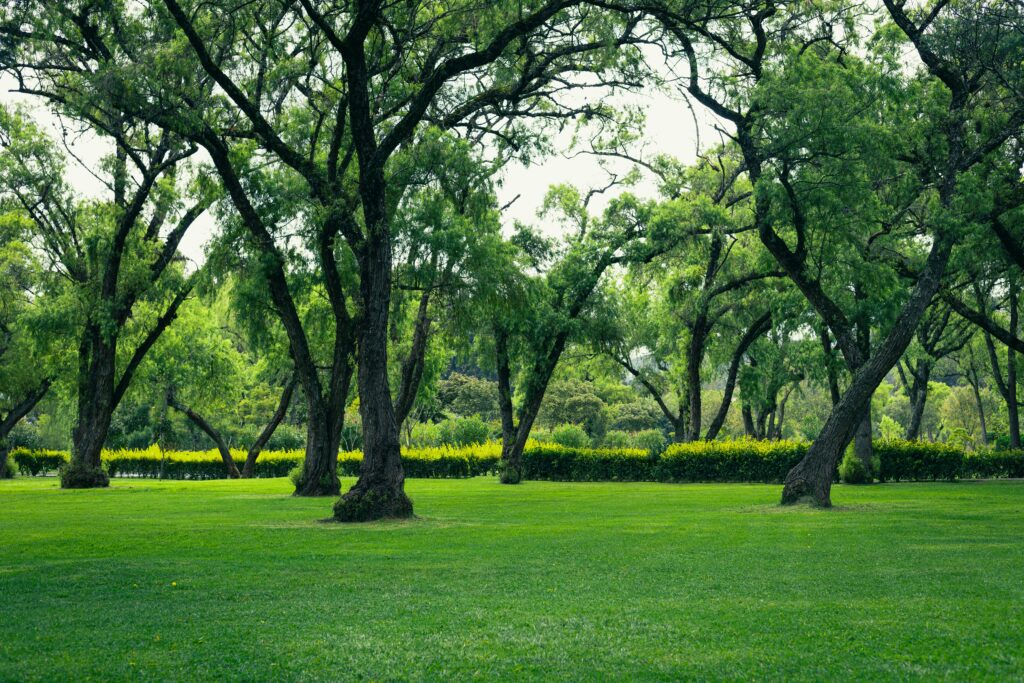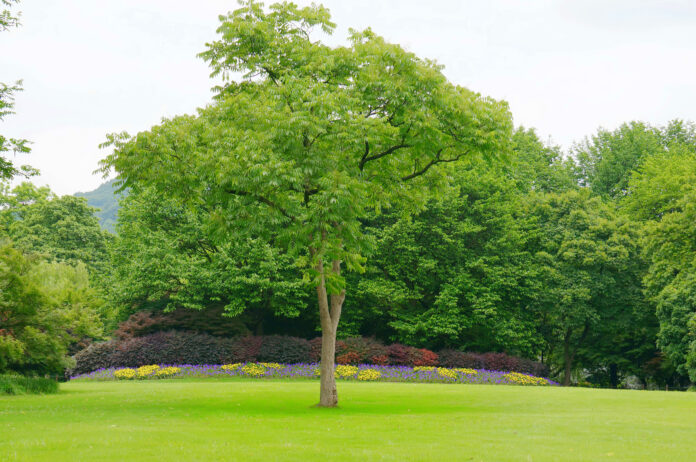Introduction
Adding the best shade trees and shade shrubs to your landscape can create a cooler, more comfortable outdoor environment. Whether you’re looking for broad-canopied trees to cast shade over large areas or dense shrubs to provide privacy and block sunlight in smaller spaces, incorporating shade plants can transform your yard into a refreshing retreat. This guide covers top choices for shade trees and shrubs, from fast-growing options to beautiful ornamental varieties, helping you design landscaping that offers both aesthetic appeal and practical benefits like energy savings and erosion control.
Best Shade Trees for a Cooler, More Comfortable Landscape

Incorporating the best shade trees into your landscape is a great way to reduce heat, enhance privacy, and create inviting outdoor spaces. These trees offer broad canopies, quick growth, and beauty that benefits both your home and yard.
1. Benefits of Planting Shade Trees and Shrubs
Before diving into specific plant choices, it’s helpful to understand the benefits of adding shade-providing trees and shrubs to your landscape:
- Cooling Effect: Shade trees reduce temperatures by blocking sunlight, which helps keep your home and yard cooler.
- Energy Savings: By strategically planting shade trees near your home, you can reduce air conditioning costs during the summer.
- Privacy and Wind Protection: Taller shrubs and trees offer natural privacy and can act as windbreaks, protecting your yard from strong winds.
- Enhanced Aesthetic Appeal: Shade plants add height, texture, and visual interest to your landscape, making it more inviting.
Now, let’s explore the top tree and shrub options to provide shade and transform your landscape into a refreshing retreat.
2. Best Shade Trees for Larger Landscapes
If you have a spacious yard, larger shade trees are an excellent choice. These trees grow to impressive heights and provide substantial shade coverage.
- Oak Trees (Quercus spp.): Oak trees are popular for their broad canopies and durability. Varieties like the white oak and red oak thrive in various climates and grow large enough to shade large portions of a yard.
- Maple Trees (Acer spp.): Maple trees, such as sugar maple and red maple, are known for their dense foliage and vibrant fall colors. They provide deep shade in summer and allow filtered sunlight through in winter.
- Sycamore (Platanus occidentalis): Sycamores are fast-growing trees that develop wide, spreading crowns, perfect for creating shade quickly. Their mottled bark and broad leaves add beauty and cooling shade.
- Elm Trees (Ulmus spp.): American elm trees are another excellent option, with their tall, arching branches forming a large canopy. Elms are hardy and tolerate various soil conditions, providing ample shade and a classic appearance.
Planting Tip:
Space large shade trees at least 15-20 feet from your home to prevent root interference and allow proper airflow.
3. Medium-Sized Shade Trees for Smaller Spaces
If you’re working with a more compact yard, consider medium-sized trees that provide ample shade without taking up too much space.
- Dogwood Trees (Cornus spp.): Flowering dogwoods are beautiful trees that reach 15-30 feet in height. They provide filtered shade and seasonal interest with white or pink spring blooms.
- Redbud Trees (Cercis canadensis): Redbuds are small to medium-sized trees with vibrant spring flowers. They offer light shade under their umbrella-shaped canopy and are perfect for smaller yards.
- Japanese Maple (Acer palmatum): Japanese maples offer delicate, colorful foliage and grow between 10-25 feet. They’re ideal for partial shade and add an elegant look to the landscape.
- Serviceberry (Amelanchier spp.): Serviceberry trees provide light to moderate shade and produce edible berries. They’re adaptable to various climates and offer white spring flowers and orange fall foliage.
Planting Tip:
Plant medium-sized trees near patios or seating areas to create comfortable, shaded spaces without blocking the entire yard.
4. Best Shrubs for Shade and Privacy
Shrubs can be a valuable addition to your landscape, providing shade to lower-growing plants and creating privacy in outdoor areas.
- Holly (Ilex spp.): Hollies, including American holly and Japanese holly, offer dense, evergreen foliage that provides excellent shade and privacy. They thrive in various climates and add structure to garden beds.
- Boxwood (Buxus spp.): Boxwoods are versatile, slow-growing shrubs that can be shaped into hedges or left to grow naturally. Their dense, green foliage provides shade for smaller plants and adds a classic touch to the landscape.
- Hydrangea (Hydrangea spp.): Hydrangeas, especially the larger panicle and oakleaf varieties, provide shade with their lush foliage. They also add seasonal interest with vibrant blooms.
- Rhododendron (Rhododendron spp.): Rhododendrons are broadleaf evergreens that produce large, showy flowers in spring. Their dense foliage provides cool shade, making them ideal for creating a secluded, shaded area.
Planting Tip:
Shrubs work well as natural fences or borders. Plant them in rows to create privacy screens or windbreaks, or place them in groups for layered shade coverage.
5. Fast-Growing Trees for Quick Shade
If you need shade quickly, certain fast-growing trees can help create a shaded area in just a few years.
- Willow Trees (Salix spp.): Willow trees, such as the weeping willow, grow rapidly and provide extensive shade with their long, flowing branches. They’re best suited to larger yards with moist soil.
- Hybrid Poplar (Populus deltoides x Populus nigra): Hybrid poplars are among the fastest-growing shade trees, with some varieties reaching 5-8 feet of growth per year. They’re hardy and work well for creating windbreaks.
- River Birch (Betula nigra): River birches grow quickly and tolerate wet soil. Their peeling bark and spreading canopy make them attractive options for fast shade and aesthetic appeal.
- Tulip Tree (Liriodendron tulipifera): Tulip trees grow quickly and develop large, tulip-shaped flowers in spring. They provide ample shade and can reach heights of 70-90 feet.
Conclusion
Creating shade in your landscape with trees and shrubs enhances both comfort and aesthetics. From large shade trees to ornamental shrubs, there are options to suit every yard size, climate, and style. By carefully selecting the best shrubs and trees for your space, you can create a lush, cool retreat that provides privacy, reduces energy costs, and enriches the overall appeal of your outdoor space. Whether you’re aiming for a fully shaded garden or a few cool spots for relaxation, these shade-providing plants will transform your landscape into a refreshing haven.














